Processors can improve processes and simplify operations
July 20, 2021
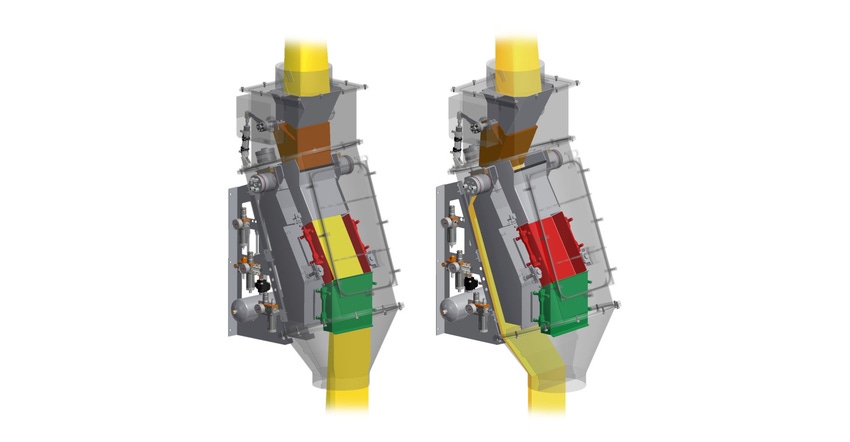
Jay Daniel, manager R&D – polyolefin feeders & accessories, Coperion
Measuring and controlling the flow rate of high throughput bulk solids is a requirement frequently encountered in many different industries such as chemical, power, food, animal feed, grain, cement, coal, glass, aluminum, and polyolefin production operations. Usually, high-capacity metering equipment is physically large, complex, expensive, and cumbersome, and delivers only marginally accurate performance with questionable long-term stability. With the development of drift-free digital flow metering technology, higher rate metering and feeding has become more accurate, reliable, and economical, and smart flow meters can even double as accurate high-speed weigh feeders.
Traditional Technologies
Conventional methods of measurement methods for bulk solids flow include Coriolis flow meters, as well as meters with either an impact plate or a curved diverting chute. In a Coriolis flow meter the bulk material must pass through a rotating wheel with guide vanes. A controller measures the torque of the motor rotating these vanes to deduce the mass flow. This method can cause significant stress on the material and is problematic if there are larger chunks of material or if material is sticky and adheres when impacting against the guide plates. While the Coriolis flow meter offers an accurate measurement, it is also noisy in operation and difficult to clean.
In meters with an impact plate the bulk material falls onto an inclined impact plate. The resulting impact force is used as a measurement variable for determining the rate of flow. Measurement accuracy is dependent on consistent bulk density and stable conditions. The friction of the impact can also damage the bulk material.
In meters with a diverting chute the bulk material is fed in to a curved measurement chute. The centripetal force is measured as the material flows along the chute and changes direction. From this, the mass flow is calculated. This solution is gentle to the material and easy to clean but accuracy is once again dependent on consistent bulk density and stable conditions.
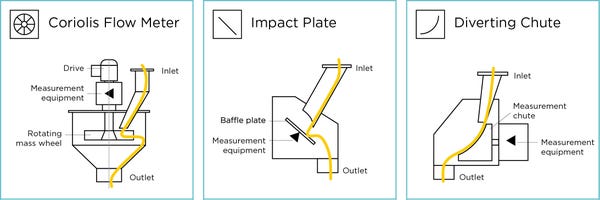
Figure 1: Traditional bulk solids flow meter principles
Smart Technology
An ideal bulk solid flow meter should not only feature high-performance accuracy, but also simplicity of design, long-term operational stability, low or no maintenance, insensitivity to ambient conditions, durability, and the ability to tare without interrupting production. Such a solution would have no moving parts within the measurement path, thereby ensuring gentle handling of the bulk material, and feature an advanced measurement and control system to ensure high accuracy – a distinct advantage over other flow meter technologies. Figure 2 shows a smart flow meter with the service door open and measuring channels visible.
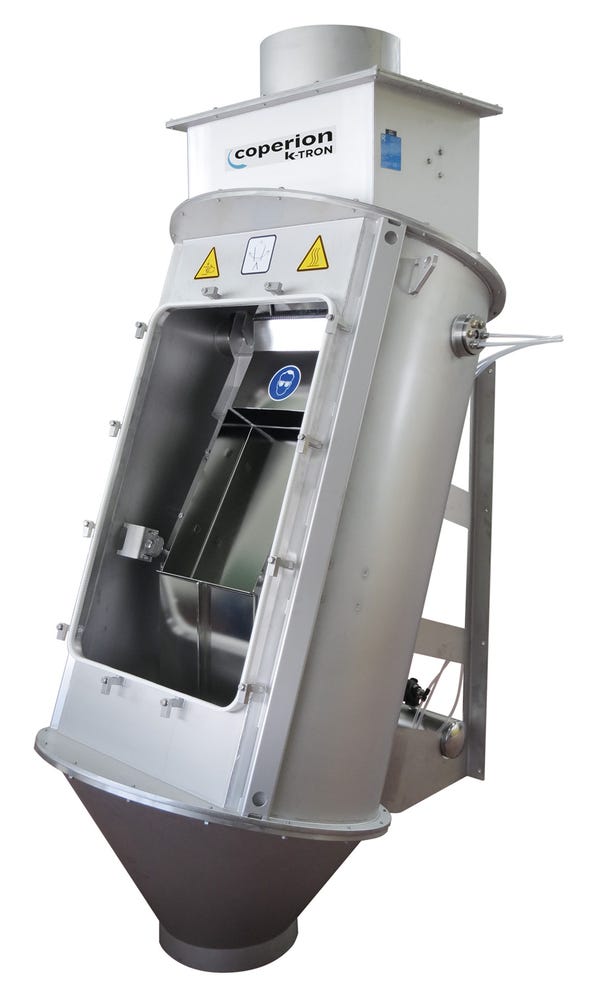
Figure 2: With no permanently moving parts in the measurement channel, the smart flow meter offers gentle handling of the bulk material.
In the case of the smart flow meter, the bulk material flows via a stabilization section through two sequential measurement channels, which exert no mechanical effect on the material. Figure 1 shows the flow meter with the cover removed and the upper measurement channel visible. Both channels are mounted on highly accurate digital load cells that independently measure the weight and speed of the material flow, from which the mass and velocity are calculated. With these two readings known, the actual flow rate is easily determined. This design allows free flow even when the measurement system is switched off. No additional forces act on the bulk material, in other words, the material is not affected by the measurement system.
The principle of operation is based on Newton’s second law of motion: F=ma (force = mass x acceleration). Bulk material flows by gravity into the upper measurement channel, an inclined chute mounted on a load cell. The force acting perpendicularly on the chute channel continuously generates a weight signal representing the material’s mass. The bulk material then flows into the lower, vertical channel with the second load cell, measuring the force of impact, thus enabling the controller to determine velocity through a mathematical calculation based upon Newton’s law. Using the signals from both load cells, the flow rate is then determined per unit of time. Figure 3 shows a cross section of the flow meter, with F1 and F2 representing the two forces being measured.
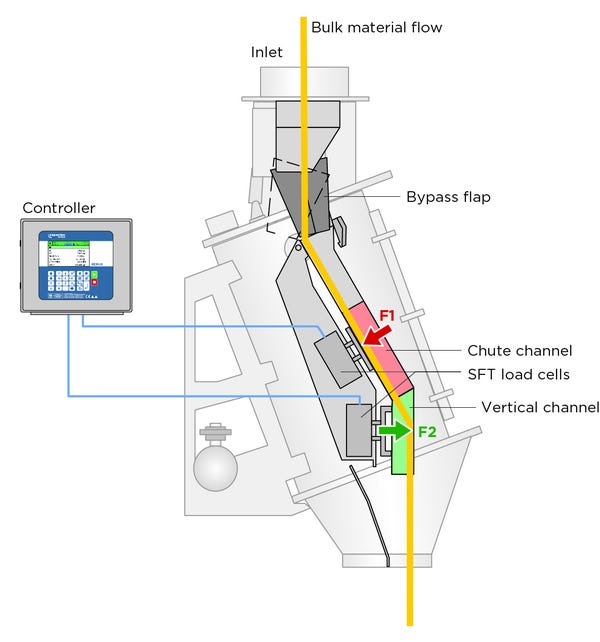
Figure 3: In the smart flow meter the first load cell measures weight (F1), the second measures acceleration (F2), from which the controller calculates the flow rate.
In practice, the two force measurements reflecting weight (chute channel) and speed (vertical channel) are combined with parameters of design geometry (upper measurement channel length and slope) to determine the flow rate, even though the material accelerates in transit through the device.
Online Taring Increases Accuracy
As an added bonus, such a flow meter would be fitted with a bypass channel to enable taring at any time without interrupting the metering process. Taring may be called for when sticky materials cause build-up inside the device or when major changes in ambient temperature or the temperature of the bulk material occur during operation. Either of these situations could affect the accuracy of the weight measurements, requiring the weighing system to be tared. Normally the system would have to be shut down in order to tare the weighing system, but a bypass allows for taring without interrupting the process. The bypass flap built into the inlet allows the material flow to be diverted to a separate internal channel. Whilst the material flow is redirected, the new tare weight is determined and the zero value is reset. As soon as re-taring has been accomplished, the flap moves back to the standard position and the material flows down the regular metering path of the device. Re-taring can be done manually or by setting up the controller to periodically perform the operation. Figure 4 illustrates the material flow in measuring mode and in bypass mode.
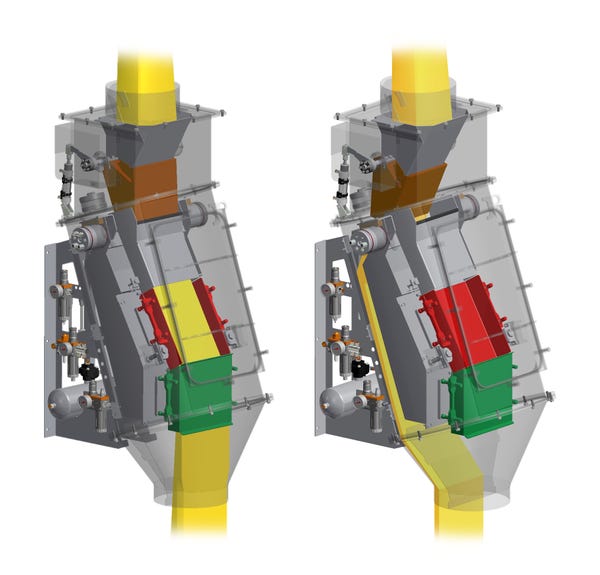
Figure 4: The built-in bypass channel allows for online taring during operation by diverting the material flow from the measuring channels.
Areas of Application
Flow meters excel as high rate gravimetric feeders, or as batchers or meters in a variety of industries. Flow meters where the material can flow freely, such as the smart flow meter, can handle many types of free-flowing bulk materials with particle sizes from 0.02 to 10 mm. The bulk material’s angle of repose should be less than or equal to 40° (measured from horizontal). Bulk material shapes easily handled by such meters can include granules, chips, or fibers. Typical applications include feeding control at high rates with a rotary valve or similar device at the infeed, measuring batches into filling or other downstream equipment, or simple metering for materials management or data logging. Figure 5 shows three installation examples.

Figure 5: These are a few typical examples of how a bulk solids flow meter might be used in a manufacturing process.
Flow Meter Application Examples
1) In detergent manufacture the liquid base detergent is fed to a spray tower where it is converted into a powder. The nature of the process makes it difficult to regulate the spray tower output. Nevertheless, additives such as powdered enzymes and liquid perfume require to be accurately proportioned to the wild flow of the powdered detergent.
A bulk solids flow meter positioned at the discharge of the spray tower provides for very precise regulation and metering of the detergent flow. With the additive feeders downstream slaved to the mass flow output signal of the flow meter, the additives can be accurately fed to the production process, resulting in a more consistent quality of the end product as well as savings on costly additives.
2) In large-scale coffee production, the proportions of the actual coffee beans and the skins in the coffee fruit are of concern to coffee processors. The waste skins are removed either by dry or wet methods, resulting in the naked coffee beans which are then ready for further processing. A low bean-to-skin weight ratio means that less coffee can be produced from each unit of purchased coffee fruit. Coffee processors therefore require a means of identifying supplies of coffee fruit with thin skins.
In order to determine the weight of the bean skins in a production process, two flow meters are employed: one immediately preceding the skin removal section and the second one at the skinned bean discharge. The difference in weight between the two flows represents the weight of the skins.
3) In powdered sugar production, large amounts of crystallized sugar are fed from a storage hopper into a hammer mill while adding a small proportion of starch or calcium phosphate. Because of the high throughput rate of the crystallized sugar, as well as its abrasive nature, a standard loss-in-weight feeder is an unnecessarily expensive solution for the main ingredient.
A flow meter installed below the storage hopper is the better choice. A conveyor screw feeds the crystallized sugar from the hopper into the flow meter which then measures the mass flow of the sugar and regulates the speed of the conveyor screw in order to maintain the desired throughput rate. A small loss-in-weight feeder slaved to the sugar’s flow rate accurately proportions the additive by weight.
If a smart flow meter is used in this application the lack of moving parts in permanent contact with the product means better efficiency is attained and there is less need for maintenance or cleaning.
4) In polyethylene compounding systems, a smart flow meter in particular offers advantages over traditional weigh belt feeders for handling the main components. The smart flow meter is easy to operate, can handle large feeding capacities, offers high long-term accuracy, and requires only minimal maintenance. Furthermore, changeover to alternative raw material sources is easily done. The automatic taring option enables to compensate for any material build-up inside the device without interruption of the production process.
Depending on the recipe, a number of raw materials can be fed to the process by flow meters. Feed rates often range between 22,000 to 44,000 lb/hr, but can also be significantly higher. Material supply to the flow meters can be accomplished by screw feeders or rotary valves, for example. In addition, additives can be fed into the extruder by weigh belt feeders and loss-in-weight feeders. Figure 6 illustrates a typical polyethylene process utilizing a smart flow meter for the polyolefin powder.
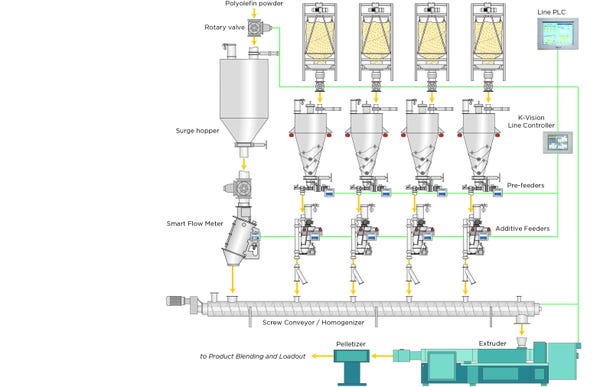
Figure 6: Example of a polyethylene process featuring a smart flow meter feeding the main resin and loss-in-weight feeders feeding the additives.
Compared to the weigh belt feeder solution, the smart flow meter offers considerable savings on raw materials, and with maintenance costs around nil, it also contributes to substantially reduce operational costs.
5) In raw meal kiln feeding in cement manufacture, closed-loop control typically uses a metering feed gate to control flow rate. A flow meter can be used to precisely regulate raw meal to the kiln preheater.
Due to the necessity for long, uninterrupted periods of continuous operation, a weighing hopper with load cells is normally used. This allows for periodic automatic checks and adjustments based on the loss-in-weight principle. Should on-line calibration corrections be required, the controller will automatically apply that correction over time to avoid destabilization of the kiln.
6) In feeding pulverized coal in a cement kiln firing application, a flow meter is used in closed-loop control with a rotary valve or screw prefeeder. A smart flow meter with a 10-bar rated jacket controls flows of pulverized coal and is fully compatible with pump or injector feeding systems. Multiple flow meters may be connected to a single coal storage silo to simultaneously feed the main burner, precalciner and other preheating positions. When the coal storage silo is mounted on load cells, regulation of the silo filling level and automatic feeding precision checks are possible.
The combination of an appropriate feeding device with the flow meter results in the ability to proportion the introduction of additives to the finished cement or to accurately measure loading of the final product.
Conclusion
By combining stable, high-resolution digital weighing with an innovative approach to continuous flow meter design, reliably accurate flow measurement and control is available, without the complexities, cost, or performance limitations of traditional technologies. The application of smart digital weighing technology to high-capacity solids metering and feeding brings quality-conscious processors in a range of industries the ability to improve their processes and simplify their operations.
Jay Daniel is manager R&D – polyolefin feeders & accessories, Coperion. Coperion K-Tron is a brand of Coperion. For more information visit www.coperion.com or email [email protected].
You May Also Like


